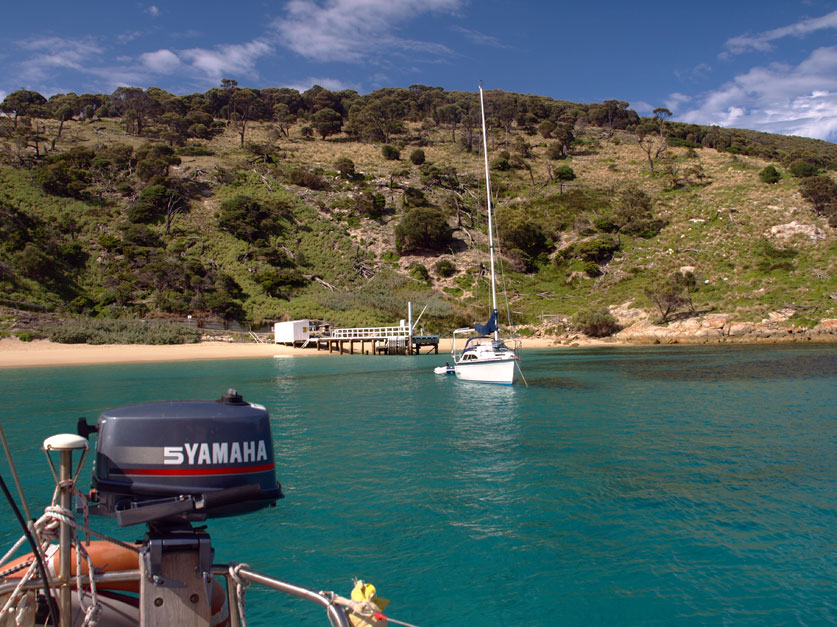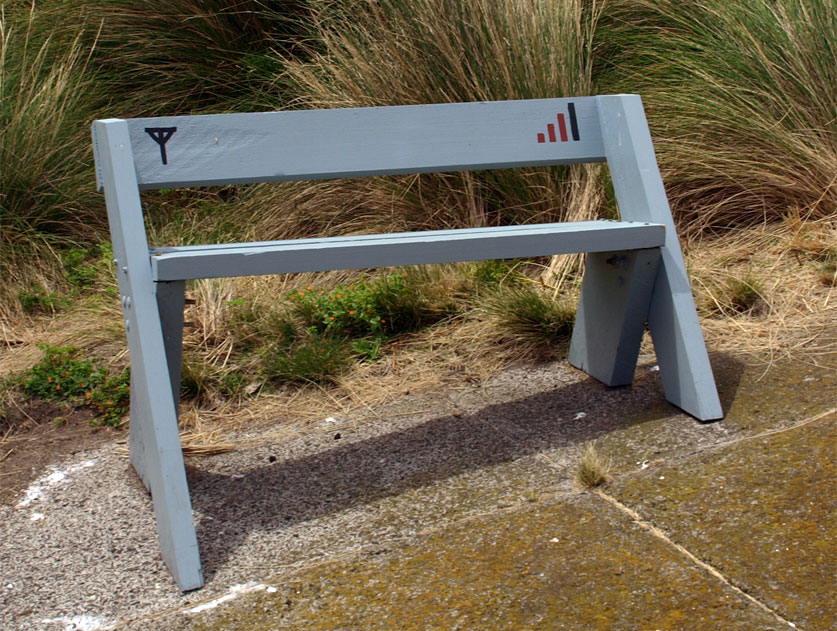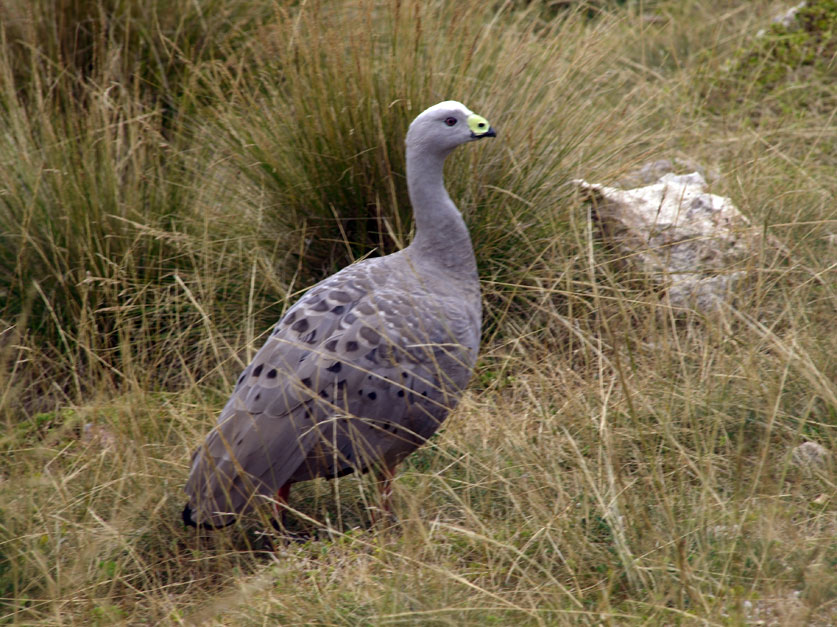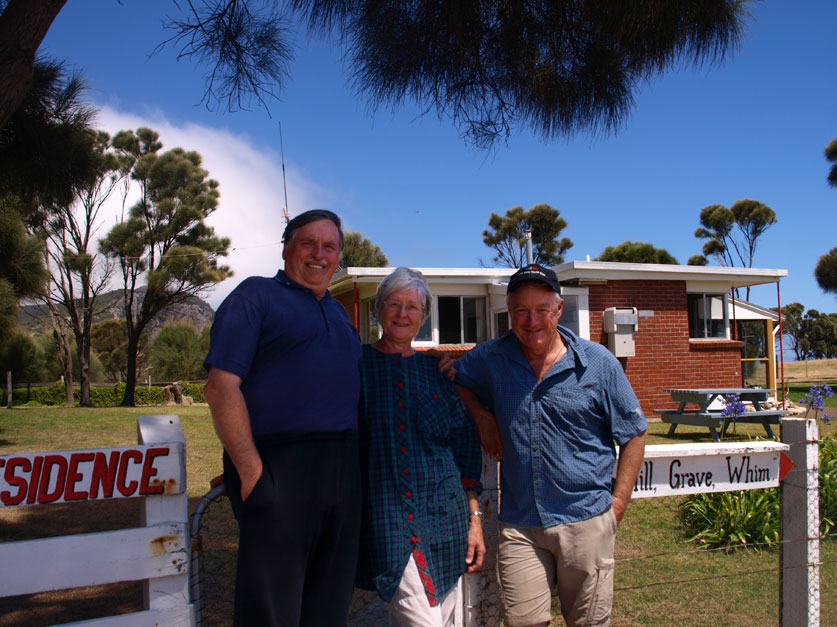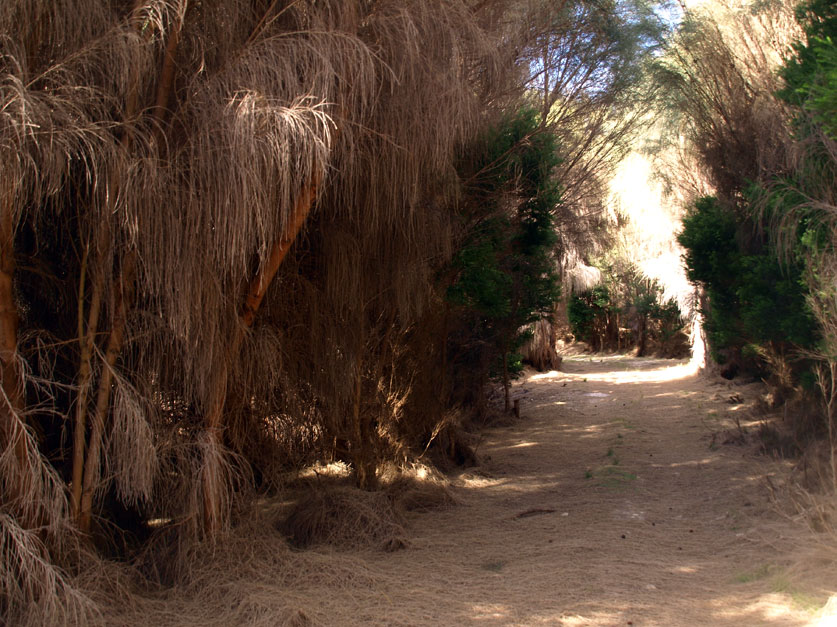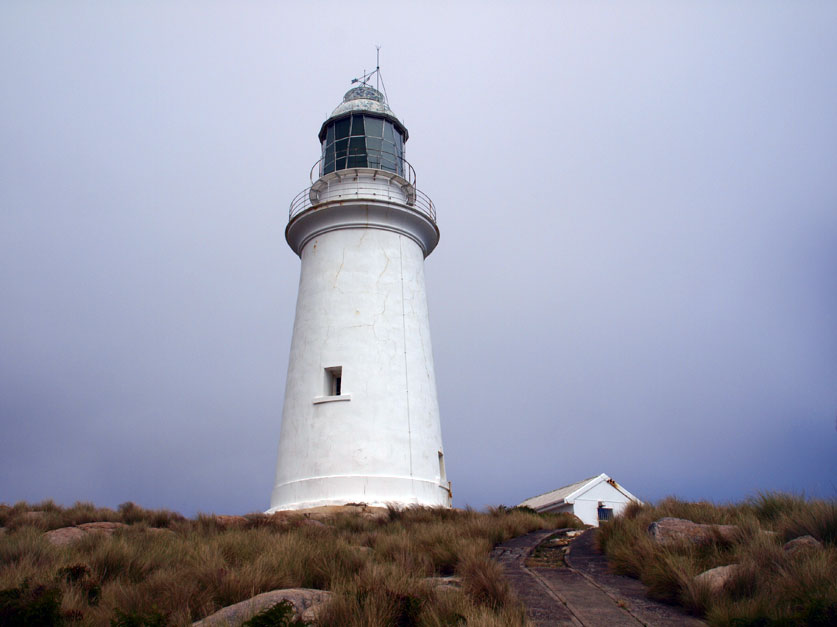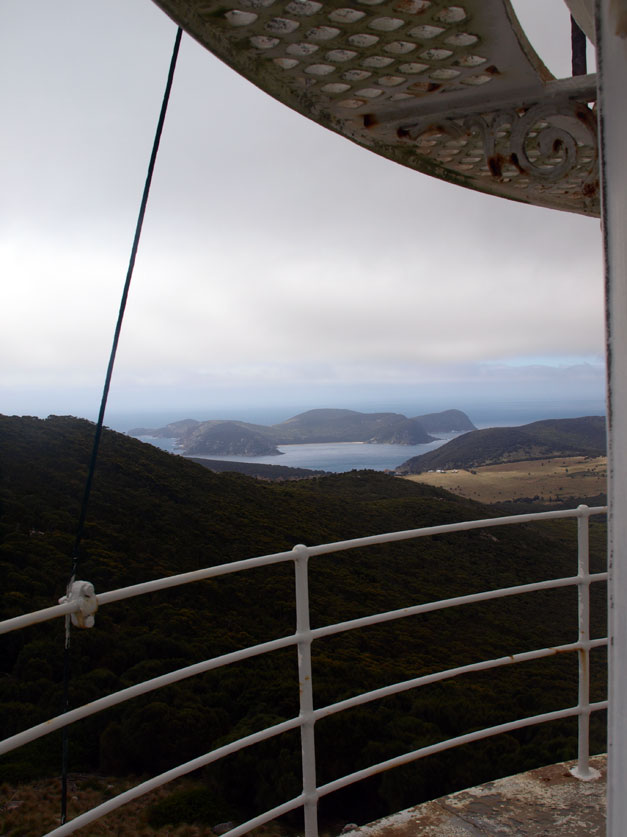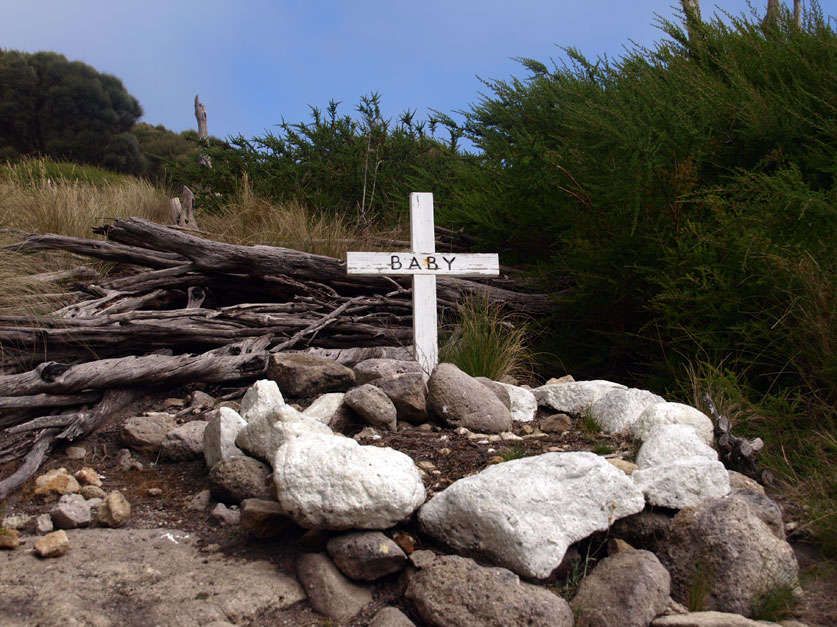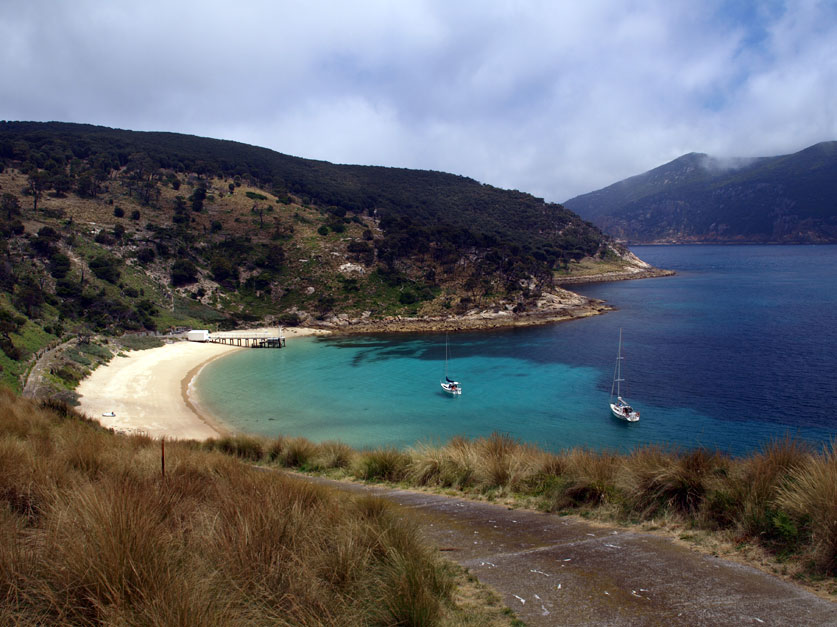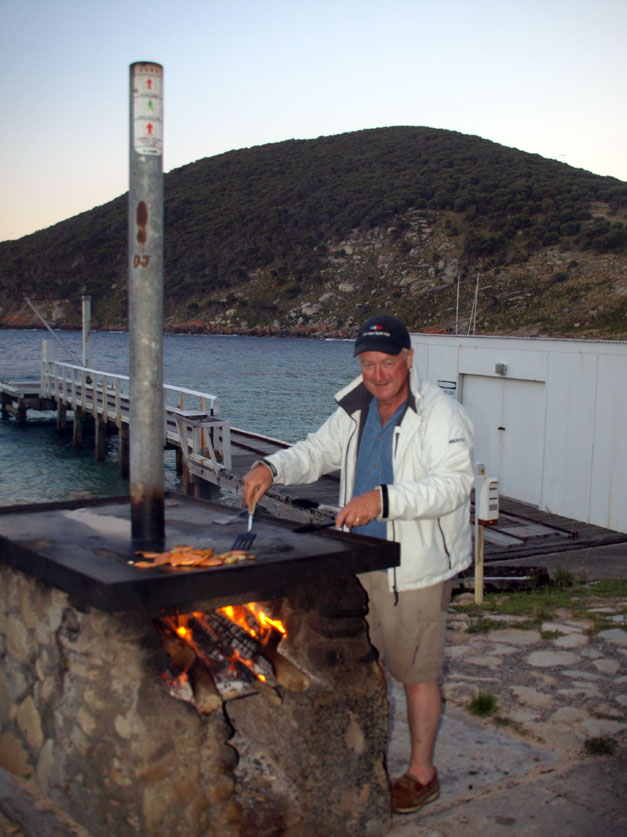The Bradleys are a family who do enjoy their sleep ins on holiday. Far be it for me to begrudge them that, I am cursed with the opposite affliction and rise with the chooks, even on holiday which on occasion has driven my darling wife Jane to distraction. There is a quiet time to be had on deck, for after all, the space on a cruising yacht is somewhat confined. It also allows me the opportunity to write my blog, and attend to office work. Roberts head appears out of the v-berth at around 9.45. which signals the start of activities, the first of which is brunch; fresh coffee, muesli, stewed fruit, toast and spreads. Today is Robert and Felicity’s 31st wedding anniversary, so Aimee and I are taking a hike up to the lighthouse to give the happy couple some time for quiet contemplation.
We get away around 13.00, and run the tender up on the beach next to the East Cove Jetty. We drag it up the beach and anchor it safe from the incoming tide. There is a steep sealed track that leads up the hill to the lighthouse keepers residences, some fifty meters above the bay. At the first switchback there is a wooden seat facing out towards Murray Pass. Engraved into its back is the cellphone connection signal and three bars.
I pull the iphone out and give it a bell, and sure enough, three bars. The seat is just in line with the gap between Erith Island and Dover Island, known as The Swashway, and a weak signal from Wilson’s Prom sneaks in. There are rufous wallabies everywhere, quite unafraid of humans, as well as Cape Barren Geese.
The lighthouse residences are a good 40 minutes walk from the lighthouse itself. There are several buildings, some dating back to 1848, when the Deal Island lighthouse was first commissioned. Nowadays, since the light was decommissioned, the complex is managed by the Tasmanian Parks service. We had our first whiff of bureaucracy as we left the beach, a sign telling us that if we wish to bring our car here it will cost us $60 per annum. The complex is managed by volunteers who do three month stints year round. There is a lengthy waiting list to get a gig. We head for the caretakers residence, one of the more modern buildings in the complex to pick up the key to the lighthouse. I knock on the door and a woman’s voice from inside calls, “Come in, come in, would you like a cup of tea or a glass of water?” Meet Mary and David, the current volunteer caretakers. They have been here for the past six weeks. “Today marks our half way point”, she says, handing me a glass of rainwater. The house is well appointed, not really different from any older farmhouse, but the exception is the view, out of every window breathtaking vistas of Deal Island, cliffs, ocean and forest. It is simply gorgeous. The kitchen is set for Devonshire Tea. Mary tells me she has made scones for our neighbors, the family anchored next door to us, who are currently walking back from the lighthouse. She promises us the same. David gives us directions and the key, and we head off down a farm track through the tussock grass.
Years ago there was stock grazed on Deal, and there are remnants everywhere, old water tanks, the odd longhorn cattle skull and dilapidated fences. The track starts to climb, and we soon enter the thickest casuarina forest I have ever walked through. The wind whispers through the phylodes just like it does through Desert Oaks in the outback so far away.
The last section of the climb is quite steep, and at last we come out in a clearing, with the Deal Island lighthouse standing before us.
We have climbed 250 meters. Attached to the main lighthouse is a generator room which is still operational. We open the door to the tower and ascend a steep iron spiral staircase to the light room.
The bannisters are clammy, and there is a dim roar from the wind outside. As we ascend there are windowpanes offering a glimpse of the spectacle to come.
 The light room looks as if it is till in operation. Heavy canvass sheets cover the windows to protect the prisms. The control panel is still there, as well as a wind up telephone, and operational instructions. Apparently the light was fired up by enthusiasts in 2000 to see in the new millennium. We open the door and step out onto a little balcony that circles the tower.
The light room looks as if it is till in operation. Heavy canvass sheets cover the windows to protect the prisms. The control panel is still there, as well as a wind up telephone, and operational instructions. Apparently the light was fired up by enthusiasts in 2000 to see in the new millennium. We open the door and step out onto a little balcony that circles the tower.
The view is incredible, but the wind is howling so hard it feels as if we could be blown off. I get signal and ring my Dad, I know how much he would love to be here. Down in Squally Bay I see a lone sea eagle circling, as bullets of wind etch a pattern on the turquoise and deep blue water. Just beneath the lighthouse is a little grave marked by a whitewashed wooden cross and a circle of stones with the simple inscription “BABY”.
According to Max Huxley, who was an assistant light keeper in the 1930’s, his mother’s grandparents, Robert and Mary Jackson, were assistant keepers in the 1890’s and lived up near the lighthouse, and here they buried their baby daughter. I guess tragedy happens every day, but it somehow always seems so much more poignant in a remote place.
The Deal Island lighthouse was decommissioned simply because it was too high, it’s light regularly obscured by cloud and fog. We descend back down to the old lighthouse keepers house, which is now a museum. The first lightkeeper was here for 20 years and raised a family of twelve children. We sign the visitors book and head over the the caretaker’s residence for the hotly anticipated Devonshire Tea.
The table is laid, and we are greeted with fresh scones, jam, and pressurised faux cream in a spray can. The caretakers must assemble all the food they need for three months, as there is no resupply. Mary brought along 40 liters of cask wine and dozens of cans of cream, the latter to treat the yachties and kayakers who risk the pernicious nature of Bass Strait weather to worship at this most hallowed of shrines. They are both people of generous spirit, who retired to live aboard their 45 foot yacht when they are not house sitting or minding lighthouses. I mention the first light keepers’ numerous offspring, and David quips, “Well, thats what you get when you don’t have any telly.” I wonder how he whiles away the lonely nights while the wind howls up from Murray Pass. When I mention we have a copy of last weeks Australian on board, his eyes light up. They agree to meet us at the BBQ on the beach later on, and we head back to the boat.
Back onboard, Robert has prepared all the goodies for the BBQ, so we load it all into the tender and transport it back to the beach. There is a sizable swell surging on the beach. The boat ploughs into the sand with a jolt and I end up on my arse in the water. No problem, because the next wave comes over the transom and Robert cops it. All fair in love and war, and we both traipse up the beach wet but happy. The neighbours have already lit the BBQ. The wood is provided by the caretakers, who collect it from Winter Cove on the east side of the island. The tidal movement seems to wash lots of driftwood up there cast aside by merchant ships. This would have to be one of the most scenic public BBQ spots I have ever cooked on. The coin-in-the-slot numbers on the banks of the Yarra are grand, but they have nothing on this.
There are visitors as well. There are rufous wallabies everywhere, a couple of “naughty boy” brush tail possums are eyeing off our food, ready to strike, and just as the last light from sunset fades, the armies of fairy penguins arrive on the beach and start waddling up to their roosts. The cove contains is a sizable penguin rookery, and looking about, they are clearly the best dressed amongst us. After braving a fairly heavy sea, or at least thats how it seemed from the tender, we scramble back aboard Escapade. All night long we rock and roll on the anchor. It is a good thing the holding is good, because surf is breaking on the rocks just 100 meters behind us.

